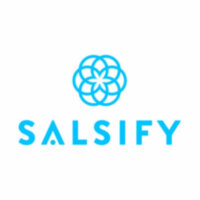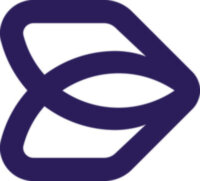Schools
What Challenges do Schools Face in Managing Digital Assets?
Do educators find it difficult to organize and share educational materials? Are school administrators struggling with the secure storage of digital records? How can schools ensure easy access to educational content for all stakeholders?
Understanding Digital Asset Management for Schools
Schools often deal with a vast amount of digital content, ranging from student records and administrative documents to multimedia learning materials like videos, images, and interactive modules. Effective Digital Asset Management (DAM) systems can significantly simplify these challenges by providing structured and secure platforms that enhance the accessibility and usability of digital resources.
Key Features to Consider
- User-Friendly Interface: It is crucial for a DAM system to be user-friendly, allowing teachers, students, and administrators to retrieve and manage digital assets without needing extensive technical knowledge.
- Robust Permissions and Security: Security is paramount in educational settings to protect sensitive information. A DAM should offer customizable access controls and robust security features to safeguard student data and school documents.
- Scalability and Integration: As schools grow and their digital needs evolve, the DAM system should be scalable. Additionally, it should seamlessly integrate with other tools commonly used in educational environments, such as learning management systems (LMS) and student information systems (SIS).
- Metadata and Search Capabilities: Effective metadata tagging and advanced search capabilities are essential. These features help categorize and locate digital assets quickly, making it easier for educators to find the right educational materials and for administrators to access records efficiently.
Why is DAM Important for Schools?
Implementing a DAM system helps schools manage their resources more efficiently, which can lead to enhanced teaching effectiveness and improved student outcomes. A well-organized digital library reduces the time spent searching for materials, allowing teachers to focus more on teaching and less on administrative tasks. Furthermore, it supports collaborative learning by making it easier to share resources among teachers and students, fostering a more integrated educational environment.
Choosing the Best DAM Solution for Schools
Choosing the right DAM system for a school involves understanding the unique needs of the educational environment. By focusing on user-friendliness, security, integration capabilities, and effective search functionalities, schools can leverage these tools to enhance educational delivery and streamline administrative operations. Remember, the goal is not just to manage digital assets but to transform them into active, accessible resources that enrich the educational process.
-
Bestseller!

Daminion
Daminion is a powerful cloud-based & on-prem DAM system designed for efficient digital asset... -
Bestseller!

OpenAsset
OpenAsset is a top-tier DAM system designed for AEC and real estate firms, offering robust... -
Bestseller!

MediaValet
MediaValet is a top-tier cloud-based DAM system designed to manage, organize, and distribute... -
Bestseller!

Canto
Canto is a top-tier DAM system designed to manage, organize, and distribute digital assets... -
Bestseller!

Bynder
Bynder is a top-tier cloud-based DAM system designed to manage, organize, and distribute digital... -
Bestseller!

Acquia DAM (Widen)
Acquia DAM (Widen) is a comprehensive DAM system tailored for efficient digital asset management.... -
Bestseller!

Cloudinary
Cloudinary is a dynamic DAM system designed to streamline media management, optimization, and... -
Bestseller!

Brandfolder
Brandfolder is a user-friendly DAM system designed to streamline digital asset management and... -

Syndigo
Syndigo is a comprehensive DAM system designed to enhance digital asset management, ensuring data... -

StoryStream
StoryStream is a cutting-edge DAM system designed for brands to manage, curate, and distribute... -

Stockpress
Stockpress is an intuitive DAM system designed to simplify the management and sharing of digital... -

SproutLoud
SproutLoud is a comprehensive DAM system designed to streamline the management and distribution... -

Salsify PXM
Salsify PXM is a comprehensive platform designed for effective product experience management.... -

Rocketium
Rocketium is an innovative DAM and creative automation platform designed to streamline digital... -

Revver
Revver is a comprehensive DAM system designed to streamline digital asset management and enhance... -

ResourceSpace
ResourceSpace is a flexible, open-source DAM system designed to streamline digital asset... -

QBank DAM
QBank is a comprehensive DAM system designed to streamline digital asset management and enhance... -

Plytix PIM
Plytix PIM is a versatile system designed to streamline product information management and... -

PIMworks
PIMworks is a comprehensive PIM system designed to streamline product information management and... -

Pimcore
Pimcore is a powerful open-source platform that combines DAM and PIM capabilities to streamline... -

Piction
Piction is a comprehensive DAM system designed to streamline digital asset management and enhance... -

PICS.IO
PICS.IO is a versatile DAM system designed to streamline digital asset management and enhance... -

Pickit
Pickit is an intuitive DAM system designed to streamline digital asset management and enhance... -

PhotoShelter for Brands
PhotoShelter for Brands is a comprehensive DAM system designed to streamline digital asset... -

Papirfly
Papirfly is a comprehensive Brand Management and DAM system designed to streamline digital asset... -

Orange Logic: CORTEX | DAM
CORTEX | DAM by Orange Logic is a comprehensive DAM system designed to streamline digital asset... -

Optimizely Content Marketing Platform
The Optimizely Content Marketing Platform is a comprehensive solution designed to streamline... -

NetX | DAM
NetX | DAM is a comprehensive DAM system designed to streamline digital asset management and... -

MediaSilo
MediaSilo is a versatile DAM system designed to streamline digital asset management for media... -

MediaCentral l Asset Management
MediaCentral | Asset Management is a comprehensive DAM system designed to streamline digital...